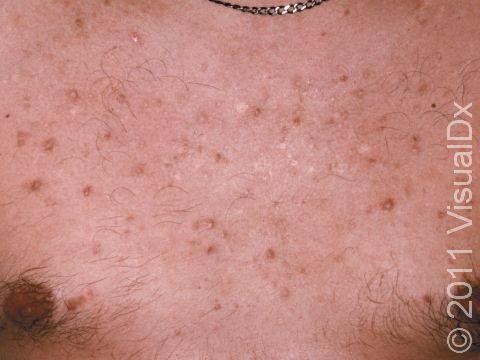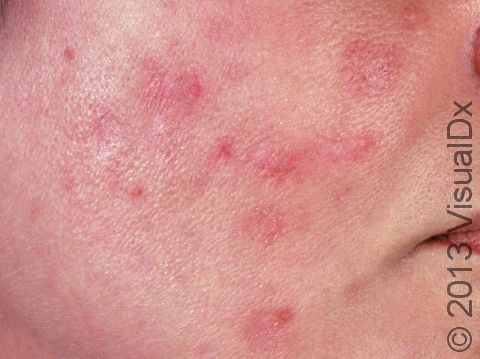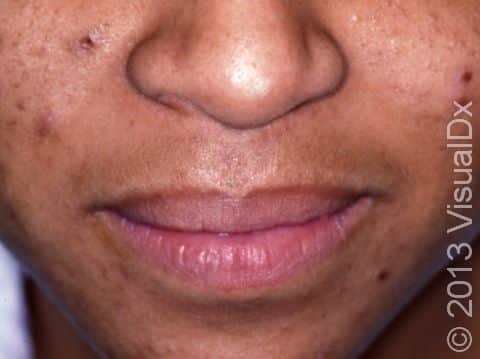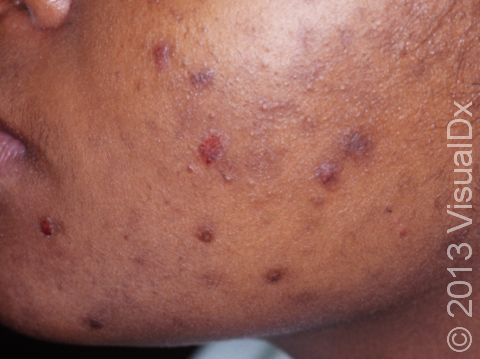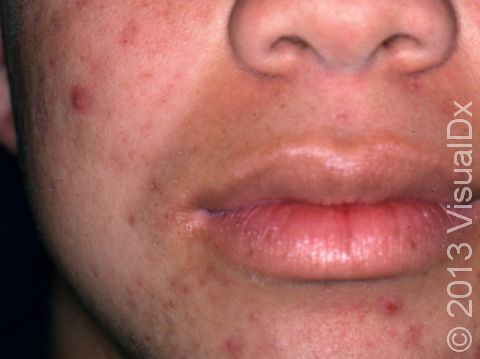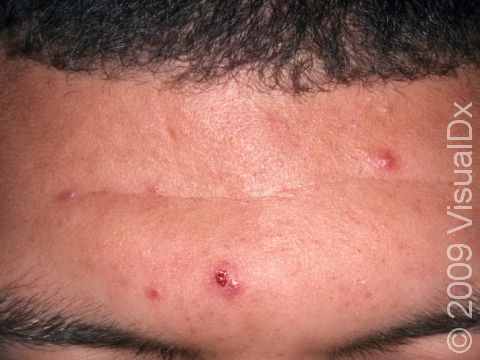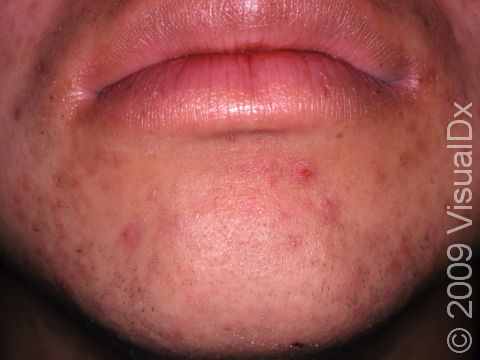Acne Excoriée
Acne excoriée is a type of acne that is sometimes called picker’s acne because it occurs when the affected individual picks at the acne lesions. This kind of acne is most often seen in teen girls. The picking exacerbates the acne and causes scars; the scarring leads to more acne and, ultimately, more picking. Anxiety, depression, and other emotional problems may accompany acne excoriée.
The acne itself, known as common acne, or acne vulgaris, is a very common skin condition caused by many factors. Treatments are aimed at these various factors and include antibiotics, medications to increase skin turnover, and medications to decrease inflammation. In the case of acne excoriée, the treatment should also address possible emotional problems.
Who's At Risk?
Acne excoriée is usually seen in teen girls and may persist into adulthood. Common acne is quite common and affects almost everyone at some point in their lives.
Signs & Symptoms
Acne results in a variety of lesions. The most common acne locations include the face, neck, chest, and back, where the most sebaceous glands are located. “Blackheads” (open comedones) and “whiteheads” (closed comedones) are follicular plugs that are either oxidized from being exposed to the air (blackhead) or sitting below the skin surface (whitehead). Papules are small pink to reddish-brown bumps, pustules are superficial pus-filled lesions, and nodules or cysts are deeper pus-filled lesions.
Mild acne consists of a few papules/pustules and/or comedones. Moderate acne has an increased number of lesions. Severe acne has numerous comedones, papules, and pustules and may have painful nodules.
Picking can result in scabs, shallow sores, and permanent scars, which can appear as either depressions in the skin or hyperpigmentation, which is dark red or brown flat marks where the acne lesions were. The habit of picking at the skin may persist long after the acne has improved.
Self-Care Guidelines
Traditional acne treatments often do not stop the habit of picking at the skin. These traditional treatments are:
- Gentle cleansing with mild soap or cleansers. (But don’t scrub!)
- Resist picking at lesions.
- Avoid irritants (rubbing and other alcohols, abrasive scrubs) and oily creams, cosmetics, hair products, and sunscreens.
- Use products labeled “water-based” or “noncomedogenic.”
- Keep hair, hands, and devices such as cell phones off the face.
- Avoid greasy products on the skin and scalp.
Over-the-counter medications:
- All over-the-counter therapies listed below should be used as a preventive therapy, applied in a thin to moderate quantity to entire regions. Acne treatment is not intended for existing individual lesions but is applied consistently over months to prevent new lesions. Expect slow improvement. Develop a skin care regimen that is modified slowly over time, not week to week.
- Benzoyl peroxide (most effective), available in a variety of forms and strengths. Benzoyl peroxides tend to dry the skin. If you have dry skin, use a weaker concentration product; for oily skin, consider higher strengths.
- A combination of a vitamin B3 (nicotinamide) and zinc is available in cream and gel form.
- Exfoliants (or peeling agents) such as salicylic acid, sulfur, resorcinol, alpha-hydroxy acids (glycolic, lactic, pyruvic, and citric acid).
- Aluminum chloride hexahydrate (an antiperspirant available as Xerac-AC™) may be useful, but can also be irritating.
- Clinac™ OC is a copolymer that absorbs oil, helping reduce the look of “greasy skin.” It also is produced combined with benzoyl peroxide.
Of Note:
- Acne can have significant psychological effects. Talk to your doctor about any feelings of depression. Counseling may be a key factor for improvement for acne excoriée.
- Changes in diet have no proven effect.
Treatments
Topical (or external) treatments include one or more creams, washes, or gels that include:
- Antibiotics such as benzoyl peroxide, clindamycin, erythromycin, sulfur, sodium sulfacetamide, and azelaic acid.
- Retinoids – vitamin A-derived products such as tretinoin, tazarotene, and adapalene.
Oral treatments may include:
- Antibiotics such as tetracycline, minocycline, doxycycline, erythromycin, ampicillin, clindamycin, trimethoprim-sulfamethoxazole, azithromycin, or cephalosporins.
- Oral contraceptives and spironolactone have been found to help regulate hormones.
- Isotretinoin, a strong drug with many side effects, for severe acne unresponsive to the above treatments.
Procedures:
- Special “blue light” treatments are a new way being investigated to treat acne but are usually not covered by insurance.
- Several types of laser treatments also help acne and are often used with other treatment methods; however, treatments are expensive, must be repeated for several months, and have variable efficacy. Insurance may not cover laser therapy.
- Laser resurfacing, plastic surgery, and/or dermabrasion may help reduce the prominence of old acne scars.
If there is evidence of excessive anxiety or depression, counseling may be suggested. Sometimes, anti-anxiety or anti-depressant medication may be prescribed.
Visit Urgency
Seek care if you have moderate or severe acne that has not improved enough with self-care.
References
Bolognia, Jean L., ed. Dermatology, pp.116. New York: Mosby, 2003.
Freedberg, Irwin M., ed. Fitzpatrick’s Dermatology in General Medicine. 6th ed, pp. 684. New York: McGraw-Hill, 2003.
Last modified on September 28th, 2022 at 7:38 pm

Not sure what to look for?
Try our new Rash and Skin Condition Finder
